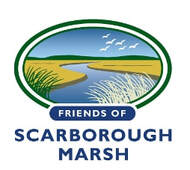Restoration Project #3
After several years of assessment, planning and coordination by local volunteers, and multiple state and federal natural resource managers, Mill Brook, a 381-acre section of Scarborough Marsh Wildlife Management Area was restored in 2005. Mill Brook salt marsh had been degraded by man-made ditches and upland land uses. Ditches were first constructed in the 1600s to facilitate the growth of salt hay by farmers, and additional ditches were dug in the 1960s, in a misguided attempt to reduce mosquito populations. Drainage ditches reduced the biological vitality of the salt marsh by limiting the frequency and duration of salt water wettings by the tides. Land-use activities on nearby uplands, including housing developments and golf courses, also negatively impacted Mill Brook by concentrating polluted freshwater run-off on the marsh surface. In recent years, Phragmites, a highly invasive plant, also appeared in Mill Brook.
The Scarborough Marsh Restoration Team (Friends of Scarborough Marsh, Maine Department Inland Fisheries and Wildlife, U.S. Fish and Wildlife Service Gulf of Maine Coastal Program, Ducks Unlimited, Environmental Protection Agency, and Natural Resources Conservation Service) implemented the Mill Brook restoration project by plugging selected ditches to improve hydrology, and removing multiple stands of Phragmites to minimize the threat of broad-scale invasion. Mill Brook now sees the regular tidal wettings needed for vigorous and diverse salt marsh vegetation communities to grow and for the saltwater pools on the surface of the marsh to be refreshed. Saltwater pools provide important habitat for small native fish, which eat mosquito larvae, and which provide food for larger fish and wading birds, shorebirds and waterfowl that depend on the marsh to feed and roost. Read More at USFWS
 RSS Feed
RSS Feed
